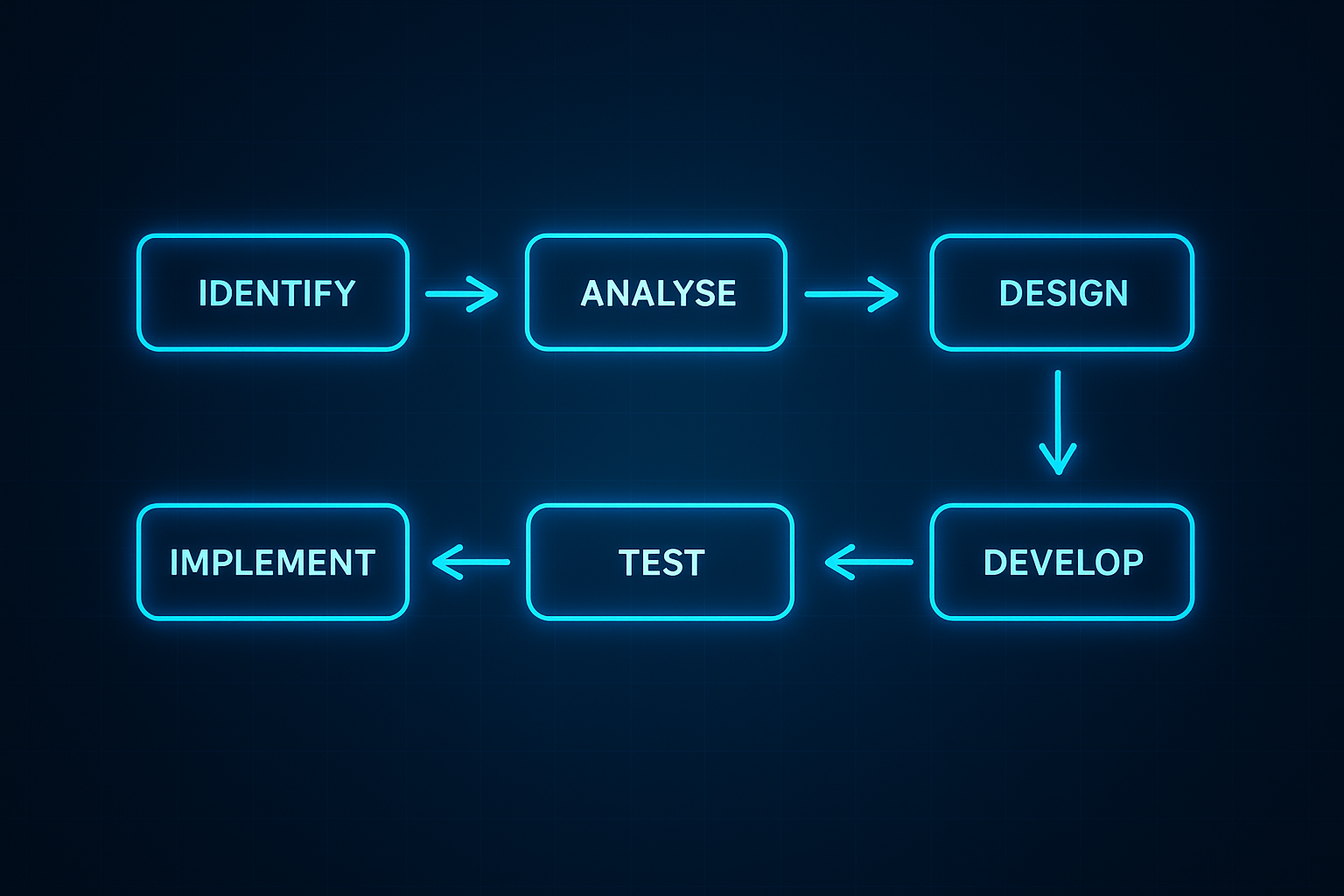
Tirion's Take on Automation: Philosophy, Risks & Best Practices
How we see automation at Tirion: not just tools, but processes, methodology, and a lifecycle aligned with business goals.
Our Philosophy: Automation as Methodology, Not Magic
Automation is not new. From early computing to modern AI agents, the journey has been long. But at Tirion, we treat software automation not as a silver bullet but as the deliberate fusion of tool + methodology + context.
In our practice—and echoed by industry research—the right solution only emerges when you define the problem correctly. Not every process needs AI or a “robot.” Sometimes a well-designed process change is enough.
The Lifecycle Approach
At Tirion we adopt a full lifecycle mindset, inspired by RPA best practices. We don’t just build automations—we consistently ask: how will this automation augment your current team?
Automation is not just about “freeing hours”; it’s also about reducing errors, improving worker satisfaction, and allowing people to focus on higher-value activities.
Thus, we follow a structured cycle: Identify → Design → Develop → Deploy → Monitor → Evolve. Selecting the right tools and techniques in each phase is vital.
Why Many Projects Fail
- Poor process definition or problem framing.
- Deploying heavyweight technology where a lightweight fix suffices.
- Bad data quality, weak integrations, or misalignment with business objectives.
- Inability to scale or lack of clear ROI, often from under-planning or weak governance.
Multiple sources suggest high failure rates in AI and automation projects. For example, a RAND report estimates that over 80 % of AI initiatives fail.
Other studies report failure rates of 70–85 % in AI / GenAI deployments not meeting expected outcomes.
An MIT-cited finding claims that ~95 % of enterprise generative AI pilots show no measurable financial impact—often due to flawed integration rather than model issues.
Also, many digital transformation programs fail — McKinsey estimates ~70 % fail because of execution, alignment, or leadership gaps.
Best Practices & Mitigations
- Begin with the process, not the tool. Conduct process mapping and stakeholder interviews first.
- Start small, then scale. Begin with non-critical workflows to validate your approach.
- Select the right automation type. Use RPA, low-code / no-code, or open-source tools like n8n, Bubble, Python scripts, etc., depending on fit.
- Always include human oversight. Even the best automation needs guardrails and human validation.
- Measure and iterate. Track metrics, exceptions, and ROI, and continuously improve.
- Governance & alignment. Ensure executive sponsorship, alignment to business goals, and clear ownership. RPA governance frameworks help keep automations sustainable.
Tooling Landscape & Strategic Capabilities
We work across a broad spectrum of technologies and styles, choosing the right blend for your context:
- UiPath — mature enterprise RPA with orchestration, governance, and visual design.
- Automation Anywhere — strong in document intelligence and analytics.
- n8n — open-source, API-centric workflow automation.
- Zapier — ideal for simpler, app-to-app workflows.
- Low-code / no-code platforms — we build apps and workflows in Bubble, Webflow, Glide, etc.
- Custom code & scripting — Python, Node.js, serverless functions, APIs, and microservices.
- Content & core systems — websites, blogs, CMS automations, content pipelines.
Our Differentiator: How Tirion Does It Differently
At Tirion, we don’t “push robots.” We first understand your business, people, constraints and then co-design an automation that is the **minimal effective solution**. It’s incremental, maintainable, and aligned to your goals.
We believe automation succeeds when it amplifies human capability, not when it replaces it. The objective: more work done, better, faster—with oversight, control, and adaptability built in.
As tools proliferate and AI & workflow platforms become more accessible, the risk is doing it badly. That’s why every automation we build is guided not just by code, but by design, governance, metrics, and vision alignment.